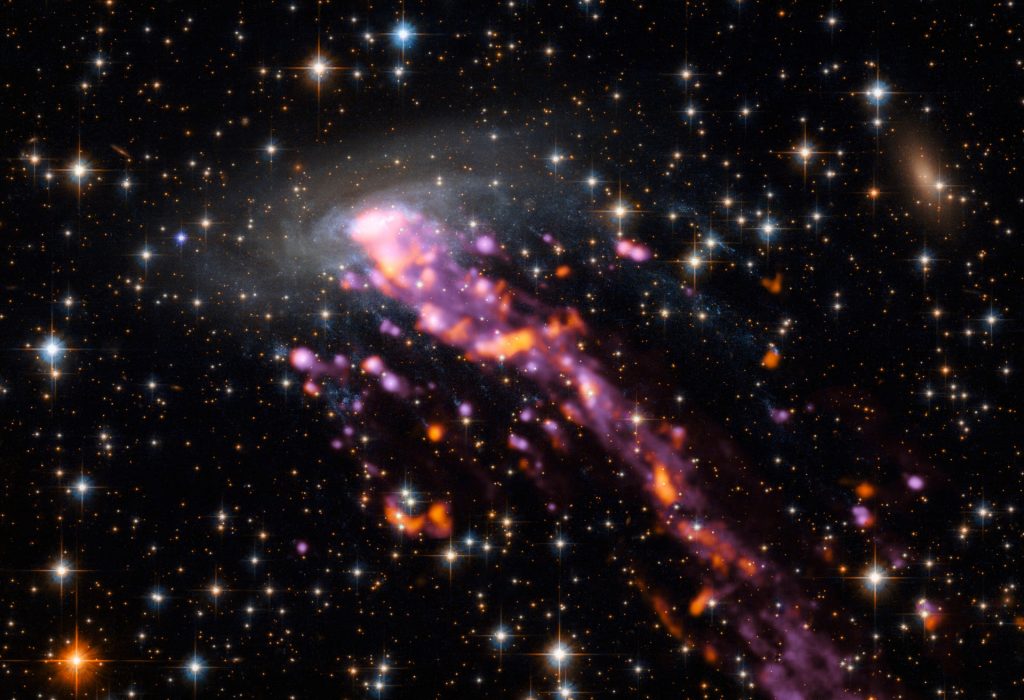
I’m not going to lie, we decided to cover this next science paper because the science is just plain pretty.
It’s long been known that as galaxies get gravitationally pulled into clusters, a lot of dramatic things happen. Galaxy clusters don’t just have a lot of galaxies, but they also have a lot of intragalactic gas. When galaxies hit this gas, the galaxies get shocked into forming stars, get distorted, and even get stripped of material. In one of the few examples of good naming in astronomy, this process is called Ram Pressure Stripping.
In a new paper published in The Astrophysical Journal, a team led by William Cramer looked at one particularly sticking example of this process: Galaxy D100 in the Coma cluster. As this galaxy has fallen into the cluster, dust and gas were systematically stripped from the galaxy, working from the outside of the galaxy, and that stripped out material was left trailing behind the galaxy like a tail. This kind of galaxy, with trailing material, is called a jellyfish galaxy.
Using data from the Hubble Space Telescope and the 8.2-meter Subaru Telescope in Hawaii, this team used D100 to explore how the material is stripped from galaxies and added into the intracluster medium. They found that as the material moved from the galaxy into the tail, it underwent star formation, with stars forming large clumps, 1,000 to 100,000 solar masses in size. These clumps spread out over time as the stars drift apart.
As D100 continues to fall into the cluster, the material continues to get stripped out, and stars continue to form in this removed mass, building a tail that has recent star formation closer to the main galaxy. Today’s observations show the galaxy is stripped of dust down to a radius of just 500 parsecs but still has a residual spiral structure that holds a record of when dust was removed in the ages of the stars. The paper indicates that a well-defined spiral galaxy like ours or Andromeda can be transformed into a featureless disk — an S0 galaxy — in just one billion years.
This galaxy is undergoing beautiful destruction. When this is over, it will be smashed into a boring blob of stars, with little or no dust and gas remaining. For now, though, this combination of jellyfish arms and remaining galaxy structures allows us to read this system’s history in the stars.
More Information
Astrobites article
“Spectacular Hubble Space Telescope Observations of the Coma Galaxy D100 and Star Formation in Its Ram Pressure–stripped Tail,” W. J. Cramer et al., 2019 January 8, The Astrophysical Journal (preprint on arxiv.org)




 Join the Crew!
Join the Crew!
 Escape Velocity Space News
Escape Velocity Space News
0 Comments